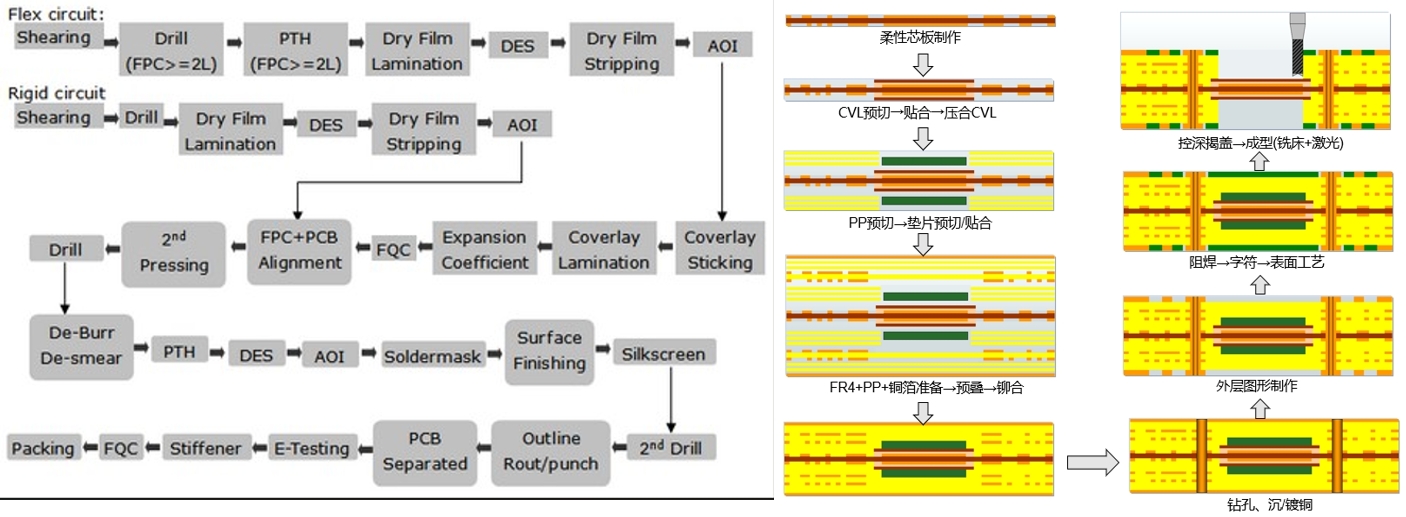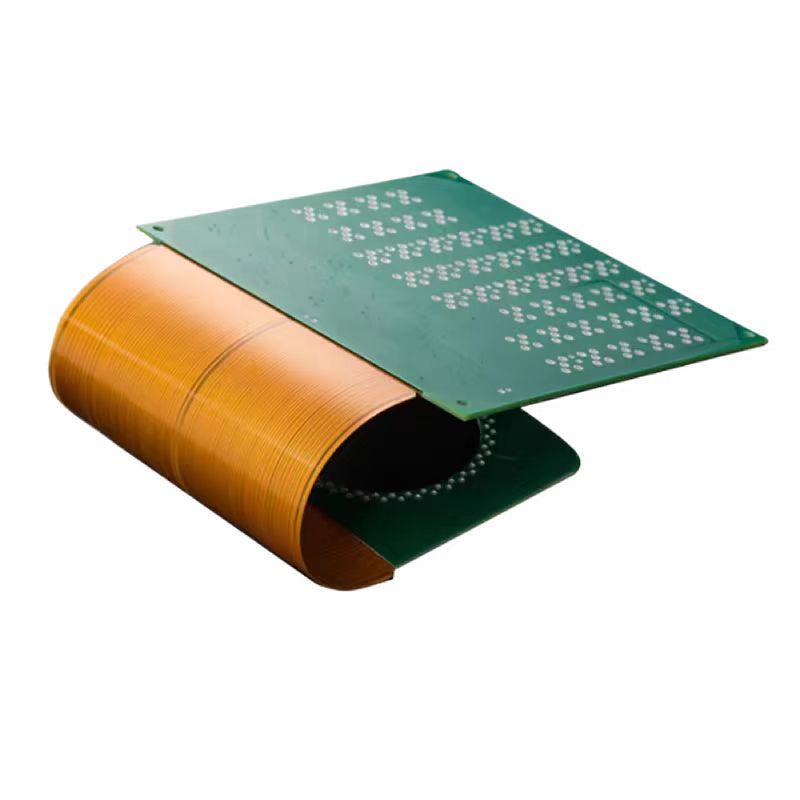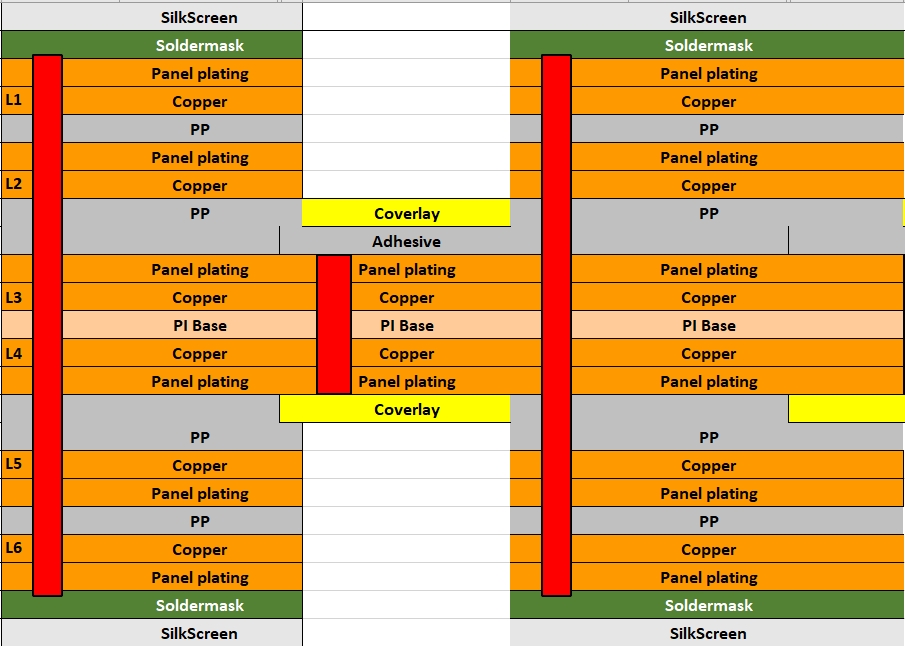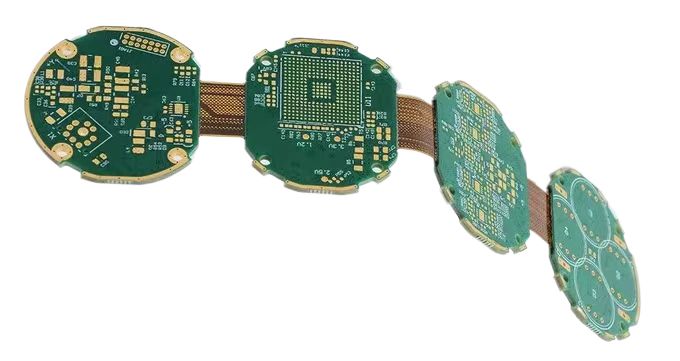Rigid-Flex PCB 
Rigid - Flex PCB (also known as rigid - flex circuit or rigid - flex circuit board) combines the features of a rigid circuit board and a flexible circuit board. It is selectively interconnected using an epoxy pre - preg bonding film and electrically connected via plated through holes (PTH) and vias, closely resembling a multi - layer flex circuit.
Areas that demand extra support are designed as rigid, while corners and regions requiring additional space and flexibility are crafted as flexible. This design enables it to leverage the advantages of both rigid boards, such as rigidity and flatness, and flexible circuits, like flexibility and bendability. Rigid - flex circuits offer higher component density and more effective quality control.
Typically, the rigid parts made from FR4 PCB can range from one to multiple layers. In most cases, the outer layers of the FR4 PCB also have one to multiple layers. The crucial element is the flexible circuit that links the rigid PCBs, which can be either single - layer or multi - layer. Currently, we are capable of manufacturing rigid - flex circuits with over 50 layers.
Vantage of Rigid-Flex PCB
- High Density Applications: The rigid area of a rigid flex circuit is utilized for high density device population. In addition, finer line width & space is allowed in flexible circuits, so more density can be used. Denser device populations and lighter conductors can be designed into a product, freeing space for additional product features.
- More application: Advances in rigid circuit board technology has broadened the applications on electronic products from communication, computer, and consumer electronics, to medical, automotive, and military electronics.
- Increasing demand for more powerful and smaller products drives the need for multiple layers to accommodate denser, finer line width and spacing and smaller hole sizes.
- Highly complex configurations
- Less electronics components need
- Reduced interconnections
- Package Size and Weight Reduction
- Additionally, air gap which widely used in a multi-layer flex circuit can be also used, and other feature such as controlled impedance, EMI shielding, panelization, stiffeners , PSA, Circuit Assembly (SMT) are also available.
Rigid-Flex PCB Capability
- 1-10 flexible layers; multiple flex layers in either bonded or air gap configuration
- 1-40 rigid layers
- 2-50 layer rigid flexible circuits
- Flex Core Materials: Polyimide (PI): 1/2 mil to 4 mils in either adhesive or adhesives constructions
- Copper thickness: 1/3 OZ – 2 OZ RA or ED type (insert material/copper-foil.htm) in flexible circuit; 1/2OZ to 10 OZ in rigid circuits;
- Coverlays: 1/2 mil to 2 mils polyimide
- Stiffeners material: polyimide, FR4, stainless steel, aluminum
- Rigid Materials: 130, 170, 180 TG FR4, low flow prepreg
- EMI/RF shielding films
- Blind and buried vias available
- Any layer available
- Controlled impedance: 50 ohm, 90 Ohm, 100 Ohm, 110 Ohm and other value
- Surface finishing: ENIG, ENEPIG, gold plating, gold fingers (3-30u” Au), Immersion silver
- IPC 6013 – Class II & Class III available
Rigid-Flex PCB Manufacturing Process
Manufacturing of rigid-flex PCB is much more complicated than other types of flexible circuit, here are simple manufacturing steps for your reference:

I-Tech provides various sizes of rigid flexible Circuit boards of different layers. All Rigid-Flex Circuits are tested with electronic testing reflecting all Gerber data to ensure continuity and other data requirements.
We can provide fast prototypes within 3-7 days, on-time delivery, great quality for you. Please contact us today for more information about rigid flexible circuits.





